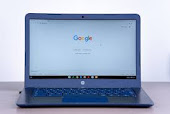V: Explore
Chicora
Elementary School's library is always busy with student and teacher activity.
The school librarian is often teaching a lesson or managing the resources of
the library. Teachers stop by to collaborate on lessons or students drop by to
explore or say a quick hello to the librarian. What does it mean to
explore? The American Association for School Librarians (2018) state the
key commitment means to, "discover and innovate in a growth mindset
developed through experience and reflection" (p. 104).
I
believe that the domain of exploration is essential to students' future. Not
only does this foundation help students to be independent learners, critical
thinkers, and problem-solvers, but also to take ownership and pride in their
work. Students will grow by becoming critical thinkers and use different
formats to create and write for a variety of purposes. They will reflect
and question their learning and exhibit persistence in their work!
Additionally, librarians will provide strategies to foster curiosity both
personally and academically and to investigate those curiosities to solve
a problem. Furthermore, librarians should help students to develop their
own interests and talents to their utmost ability in a positive
environment. The building of students' confidence and a positive mindset
to explore interests and tasks will give them tools to help them to be
successful in their current studies and in their future
professions. Chicora's School Librarian, Ms. M. Zahler is striving
to do just that. First and foremost, in order to be able to develop the
skills required for the Shared Foundation: Explore, the school librarian must
establish a positive relationship in which the students trust her and the
suggestions she gives.
I
observed Ms. Zahler teach a lesson on protection of resources and health.
She read, We are Water Protectors by Carole Lindstrom.
In this book, students were able to make the connection that the illustrated
"snake" was actually the Dakota Access Pipeline. A discussion
took place about how this pipeline would affect the people and how the people
stood up for what they believed. This read-aloud helped students to
reflect and question and also grow through their questioning and reflection (A.
Think 2 &3).
Ms.
Zahler's library space has many makerspace items for students to choose
from. From building blocks to strategy-implementing board games,
beginning coding devices, puzzles, and much more! This space gives
students the ability to explore their interests and to engage in creative
play. This satisfies the domain: B. Create 2, allowing students to tinker
and make. Resources, included in this library, to help foster exploration
and curiosity are the makerspace items, books and magazines, databases,
kid-friendly websites, and clubs.
Each
teacher sponsors a club activity for its students regularly. The
librarian, Ms. Zahler, has created a "Makerspace Club" which allow
students to delve deeper into their own personal interests (B. Create 2, C. Share
1, and D. Grow 2). She has assisted students with learning more about
personal interests such as bracelet making, cooking/baking, and writing a
recipe, play, and a collection of poems. She starts by asking the
students what is a new skill that they would like to learn and them gives them
the resources, tools, and/or connections to explore and expand upon that
interest.
Though
Ms. Zahler enjoys helping students to explore their interests, she has had
challenges/obstacles to overcome in the process. She states that it is
hard to find the time to help students to explore their interest because both
the librarian, teacher, and student's schedule must be able to sync for
collaboration to occur. Her #1 hinderance is finding the resources needed
to match the students' interest. For example, students that are
interested in baking might be able to use the school's cafeteria but that is difficult
to organize a time that will not intrude on the cafeteria staff's duties.
She mentions that there are also students who are interested in robotics but
that is an interest that could come with a hefty price tag for resources (that
is not in the budget).
Overall,
as a new librarian. I think that Ms. Zahler does an excellent job with
developing her students' ability to explore their talents and passions both
personally and academically. I suggested that in order to find additional
funding for resources in which students have expressed an interest in
exploring, she may want to consider grant writing (Ex. Donors Choose,
etc.). I enjoyed interviewing Ms. Zahler, and this has helped me to think
of additional ways in which I can support my students, in my future library, to
be the best version of themselves that they can be!
References
American Association of School Librarians. (2018). National
school library standards for learners, school librarians, and school libraries.
ALA Editions, an imprint of the American Library Association.
GIPHY. (n.d.). Explorer [GIF]. GIPHY. https://media.giphy.com/media/l4KibOaou932EC7Dy/giphy.gif



















